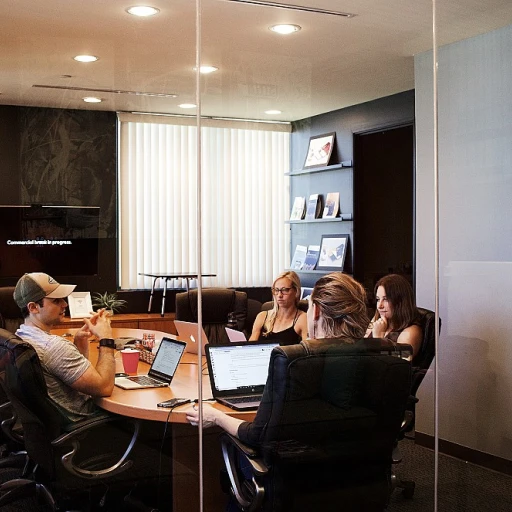
Understanding the UK Office Environment
The Complex Nature of Office Dynamics
The UK office environment is unique, shaped by cultural nuances, regulatory requirements, and a diverse workforce. Understanding this dynamic is crucial for any office manager aiming to foster an effective workspace. The balance between tradition and innovation poses both challenges and opportunities for productivity and employee engagement. Businesses in the UK often operate within a framework that values tradition but also embraces modernity. This duality often influences office work and requires adaptation of management practices to accommodate both full-time and remote working arrangements. The adoption of hybrid work models has increasingly become common, allowing employees to enjoy greater flexibility.Emphasis on the Human Element
At the core of any functioning office environment are the people who inhabit it every day. An understanding of the team dynamics can significantly contribute to a more cohesive work atmosphere. Workers thrive in environments where there is a balanced mix of professional goals and personal development. To achieve this balance, it's vital to consider the intricate aspects of work-life integration, notably the hybrid and remote models that allow more flexible work days week. The benefits working from various locations has brought about significant improvements in work-life balance for many employees.Space Design and Utilization
Effective management of physical office space is another cornerstone of a productive UK company. As companies navigate the challenge of office return, ensuring an environment conducive to collaboration and privacy becomes essential. This is where optimization of offices, including thoughtful designs like compact reception desks, can enhance the workflow and space utilization. For more insights on this topic, check out our post on optimizing space with a compact reception desk. Understanding and managing these elements within the office environment are keys to thriving in the current workplace landscape. Creating a supportive and productive working space in the UK company involves adopting flexible arrangements and maintaining an adaptable mindset.Adapting to Hybrid Work Models
Embracing Flexible Working Arrangements
The office environment today is rapidly evolving, with many companies in the UK adopting hybrid work models. These models offer a mix of both remote work and traditional office working. This flexibility not only caters to the diverse needs of employees but also supports a better work-life balance, enhancing overall productivity.
There are several benefits to allowing employees to work remotely part of the time. It empowers them to manage their personal and professional responsibilities more effectively. However, it is crucial to ensure that office days are planned to foster collaboration and team cohesion. A well-structured hybrid model helps maintain the advantages of in-person interactions while providing the convenience of remote work.
Balancing Remote and Office-Based Work
For a hybrid work arrangement to be successful, it's important to seamlessly integrate the home and office work environments. Office managers should encourage teams to establish routines that suit both remote workers and those returning to the office. Scheduling regular check-ins and encouraging feedback can ensure that all employees feel involved and supported.
As the lines between work and personal life blur, maintaining boundaries becomes vital. Establishing clear guidelines around working hours and communication expectations helps employees manage their time efficiently. The workplace also needs to adapt; offering flexible workspaces can accommodate those who prefer or need to be in the office at different days of the week.
Implementing Effective Communication Tools
Technology plays a pivotal role in supporting hybrid work models. Tools that enable virtual collaboration are essential for maintaining team productivity. When used effectively, they ensure that all workers, regardless of their location, are aligned with the company's goals and values. For further insights on how to enhance productivity in these complex environments, you might find enhancing procurement efficiency insights valuable.
Enhancing Employee Engagement
Boosting Employee Connection and Participation
Creating an engaging office atmosphere in a UK company involves more than just encouraging communication. It's about making sure employees feel part of a cohesive team, regardless of whether they are working remotely or returning to the physical office. Here’s how to improve engagement in a dynamic working environment:- Flexible Working Arrangements: Embrace flexible working by allowing employees to choose how many days a week they come to the office or work remotely. This can enhance work-life balance and increase job satisfaction.
- Regular Feedback and Recognition: Establish regular check-ins with your team. These feedback sessions not only enhance productivity but also make employees feel valued. Recognizing achievements can significantly boost morale and commitment.
- Inclusive Communication Practices: Ensure that all team members, whether they are remote workers or in-office, have access to the same information and opportunities. This can be achieved by utilizing digital tools effectively.
- Promote Team Activities: Facilitate team-building activities that encourage collaboration across different spaces, even in hybrid work settings. It helps in making the office culture vibrant and inclusive.
- Continuous Learning Opportunities: Offering opportunities for personal and professional development encourages employees to engage more with their roles and the company. This could include workshops or online courses.
Navigating Office Technology
Embracing Technological Advancements
The evolution of technology has reshaped the way office environments function, impacting office life significantly. In a company context, technology not only supports remote and hybrid work models but also enhances productivity and collaboration among team members. To thrive in today's dynamic work environment, it's crucial for employees to stay up-to-date with the latest tech tools. This means being proficient in tools that facilitate remote work, such as video conferencing and project management software. As teams operate across different locations, these tools become integral to fostering a connected and efficient hybrid workplace. Moreover, the integration of flexible and adaptive technologies can streamline office operations. For instance, cloud-based platforms enable employees to access necessary files from anywhere, supporting both work remotely setups and office work scenarios. It's essential for companies to provide training or workshops to ensure that employees are comfortable using these technologies, ultimately enhancing work-life balance and productivity. Office managers should also consider the technological needs of their workforce to create an efficient work environment. Providing the right equipment and software can significantly impact worker satisfaction and performance, contributing to a positive office culture. By addressing these tech-related needs, companies can offer more flexible work arrangements, allowing employees to choose their best working days week and enhancing overall company culture. As technology continues to evolve, so should company policies to support it. By encouraging the adoption of new tools and techniques, businesses can foster an adaptable and innovative workspace that meets the ever-changing demands of today's work life.Managing Office Space Effectively
Maximizing Your Workspace for Productivity
The importance of managing office space effectively is paramount, especially as companies in the UK evolve into hybrid work models. With many teams now alternating between remote work and office presence, understanding how to maximize the use of available space can significantly boost productivity.- Hybrid Adaptations: The shift to hybrid work requires a rethought office environment. Allowing employees the flexibility to choose their days in the office can lead to varying office utilization patterns. By creating a workspace that accommodates fluctuating numbers of workers, businesses can maintain functionality and comfort.
- Multi-Purpose Areas: Implementing spaces that serve various functions is a strategic move. Instead of dedicated workstations for each employee, consider a mix of hot-desking options and collaborative areas. This will support both solo productivity and team meetings within the same vicinity.
- Consider Remote Needs: Ensure that those working remotely have the tools and access required for seamless transitions between their home offices and the physical workplace. This includes efficient IT support and access to shared digital resources, enhancing the overall work life balance.
- Employee-Centric Design: Personal preferences play a significant role in how conducive an office environment is for productivity. Incorporate feedback from your team when redesigning office spaces. Consider ergonomic furniture, natural lighting, and quiet zones for focused tasks.
- Technology Integration: Leveraging office technology is vital for modern office management. From booking systems for meeting rooms to digital kiosks that provide real-time occupancy data, technology can aid in creating a more efficient and adaptable work office.













